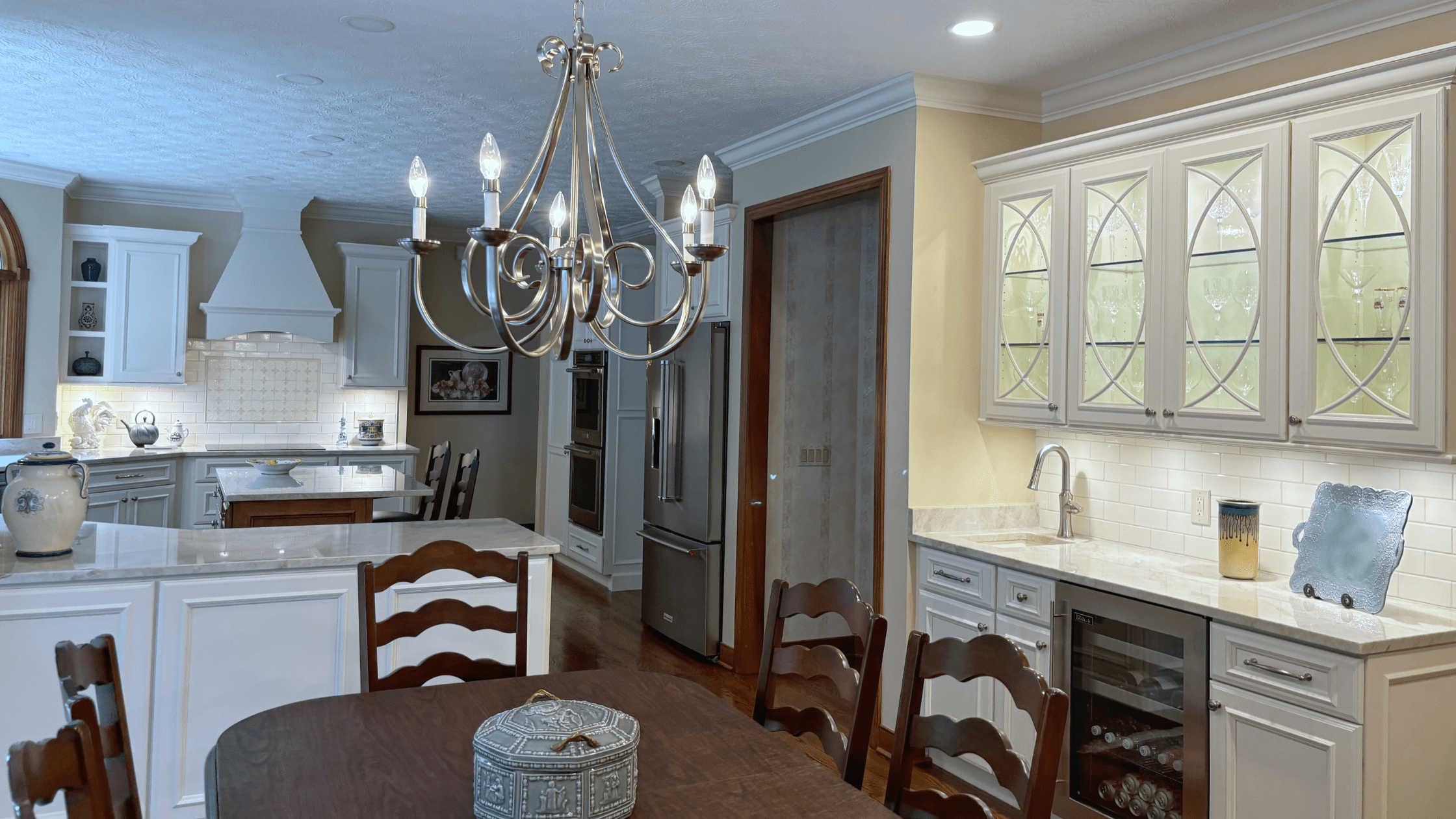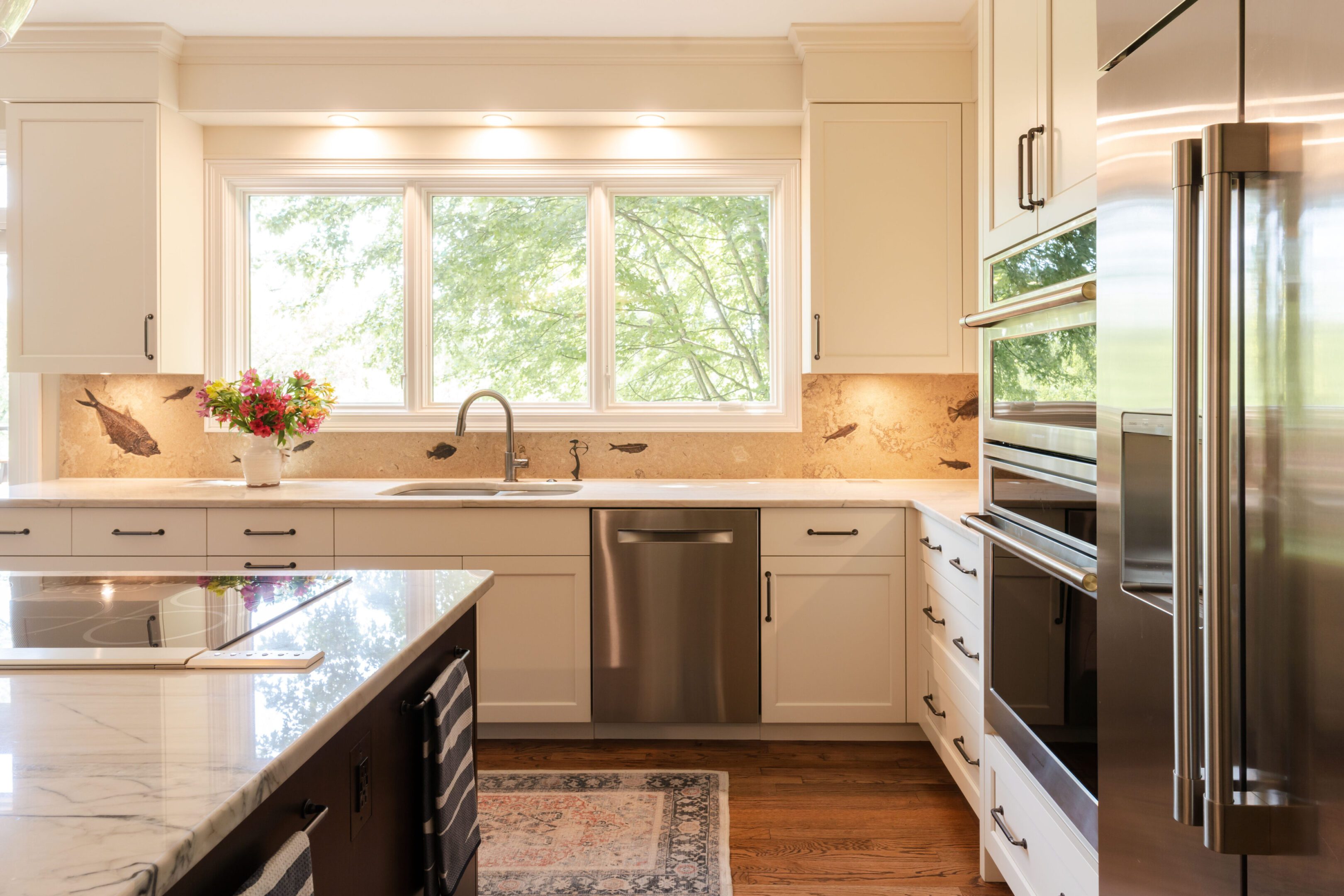
What Are Living In Place Home Modifications?
Here’s a thought: When your lifestyle changes, your house should be ready. When you have children, your house should address their needs. Your house should also empower any resident with a disability. Furthermore, if older relatives come to live with you, your house should help you care for them. Once you become an empty nester, your house should accommodate old company and new hobbies. Finally, when you reach the later stages of life, your house should let you live in comfort and safety. Does that sound like too much to ask of your house? Well, you might want to raise your expectations because your house can handle it all with living in place home modifications. What are living in place home modifications? We’ll define this term and supply examples so you can see how important they are.
What Are Living In Place Home Modifications?
So, what are living in place home modifications? Living in place home modifications are upgrades to your home that create attractive, easily accessible living spaces.
These modifications adhere to the principles of universal design, which focus on producing inclusive environments that anyone can use regardless of their age or physical ability. With living in place home modifications, you can ensure that you and everyone you love enjoy living in your house as long as they stay there.
Why Are Living In Place Upgrades Necessary?
If you currently live with a multi-generational family (or plan to do so in the future), you have people of all ages, sizes, and abilities using your home. But unfortunately, the components of your house may not oblige everyone dwelling there. Some parts of your house may only work well for people of a certain height or age. Furthermore, individuals with a permanent or temporary disability that inhibits their independent living, mobility, cognition, hearing, vision, or self-care may not be able to operate particular features in your house.
For instance, a child may not be able to reach a light switch, an older person may struggle to go up or down the stairs, and a person in a wheelchair may not be able to pass through all the doorways. Therefore, your home requires renovations that consider all its occupants and commit to meeting their needs.
With living in place home modifications, your house can be warm and welcoming to everyone. Specifically, these modifications can prevent anyone from struggling to accomplish their daily activities within your home. For these reasons, home remodeling companies like BenchMark Home Services provide living in place home modifications.

Who Makes Living In Place Home Modifications?
Many houses in America call for living in place home modifications to function well for their diverse residents. But not many people are authorized to administer living in place remodeling services. In fact, you should only trust a Certified Living In Place Professional (CLIPP) to apply living in place home modifications to your house.
A CLIPP has the appropriate knowledge and training to discern which living in place home modifications will be right for you. CLIPPs acquire their certification from the Living In Place Institute. And with their credentials, they can align with occupational therapists, architects, and designers to develop beautiful, bespoke, and hospitable domains for everyone.
Clearly, your house would be in the best hands when you trusted a CLIPP to manage your living in place home modifications.
What Are Examples of Safe Home Modifications?
While some living in place home modifications involve every room in the house, others pertain to just one type of room. The following lists present examples of both universal and room-specific living in place home modifications.
Universal Living In Place Home Modifications
- Make sure the house has an accessible kitchen, bathroom, bedroom, and laundry room on the first floor
- Expand the house with room additions as necessary to carve out enough space for the use of wheelchairs or walkers
- Lay slip-resistant flooring
- Widen doorways or install pocket doors
- Install more lighting and equip them with motion sensors to impact the balance of natural and artificial light
- Replace current windows or put in new ones for security, efficiency, and light
- Put D-handles, lever-style handles, or loop handles on all cabinets, doors, and appliances
- Place handrails and grab bars strategically around the home
- Carpet stairways and install handrails on the walls flanking the stairs
- Trade toggle-style light switches for rocker-style light switches
- Put peepholes and deadbolts on exterior doors
Kitchen Living In Place Home Modifications
Floor plan:
- Alter the kitchen floor plan to generate additional room for maneuverability
- Arrange the oven, refrigerator, and sink as close to each other as possible
- Add a seated workspace
Floors:
- Lay slip-resistant flooring like linoleum, wood, or vinyl
- Make stone or tile slip-resistant with texture
- Aid depth perception by painting the walls a different color from the floors and adding colored lines to floor transitions
- Install slopes or remove door curbs
Countertops:
- Outfit the kitchen with durable, low-maintenance countertops
- Round out the corners and edges of the countertops and outline them with color-coded edges
- Create multi-level countertops or lower the countertops
- Position grab bars on the countertops
- Prevent the surface of the countertops from being too shiny
Cabinets:
- Make sure the cabinets are easy to see by rendering them in bright, matte colors
- Add a pullout step under the lower cabinets, lower the upper cabinets by 3”, and/or give each cabinet a pull-down shelf
- Put Lazy Susan cabinets wherever you can
- Equip lower cabinets with pullout shelves
Appliances:
- Put an easily accessible thermostat or window unit in the kitchen for temperature regulation
- Keep appliances easy to reach with an accessible microwave, an accessible dishwasher, and an elevated wall oven
- Bring in a side-by-side refrigerator-freezer unit with slide-out shelving and long door handles
- Put a pull-out counter under the oven
- Switch the range out with a cooktop with front-mounted controls
Sink:
- Get a motorized sink if necessary
- Make sure the sink is no deeper than 6 inches
- Outfit the sink with a hands-free or flexible faucet with lever handles
- Add a water filter, soap dispenser, and anti-scald device to the sink
Lighting:
Install recessed, track, task, or under-cabinet lighting above countertops, islands, and walkways
Bathroom Living In Place Home Modifications
Floor plan:
- Enlarge the bathroom to allow for walker or wheelchair clearance
- Expand the bathroom door or put in a pocket door
Flooring:
- Install non-slip flooring such as laminate or textured tile
- Outline floor transitions and counter edges with colored lines, and paint the walls a different color from the floor to promote depth perception
Shower and/or Bathtub:
- Bring in a walk-in tub
- Add a no-threshold shower
- Equip the tub and shower with shelving and seating
- Position grab bars in and around the shower and tub
- Replace showerheads with adjustable and removable shower heads
Toilet:
- Bring in a bidet
- Trade your standard toilet for a comfort height toilet
- Place handrails and grab bars around the toilet
Vanity:
- Allow for under-sink clearance
- Lower the vanity sink and countertop
- Put pull-out shelves in the vanity as well as pull-down shelves in the cabinets and closets
- Hang an angled or pivot mirror above the sink
- Place D-handles or loop handles on all cabinets and lever handles on all doors
Lighting:
- Install motion sensor lights, side mirror lights, and recessed lighting for added convenience
Living Room Living In Place Home Modifications
Floor plan:
- Enlarge the living area to produce plenty of space for canes, crutches, walkers, or wheelchairs to move around in
Flooring:
- Change out the current flooring for something trip or slip-resistant, like hardwood floors or low-pile carpet
Storage:
- Acquire a custom entertainment center for concealing and organizing electronics
- Put in built-ins that successfully clear up floor space, attractively eliminate clutter, and safely hold important objects
Entertainment:
- Mount a big screen TV or a projector and screen
Support:
- Place grab bars and handrails where needed
Doors:
- Furnish all cabinets with D handles or loop handles and all doors with lever-style handles
Lighting:
- Put up motorized or manual window blinds
- Position plenty of artificial lighting overhead, such as pendant lighting, recessed lighting, display lighting, and chandeliers
- Raise the height of the sockets around the room and throughout the rest of the house
Temperature:
- Install a masonry fireplace or fireplace insert
- Upgrade your HVAC system if needed
Bedroom Living In Place Modifications
Accessibility:
- Put in a stairlift if a ground-floor master suite is not desirable or possible
Floor plan:
- Build out the bedroom to supply space for a walker or wheelchair to maneuver in
- Alter the bedroom floor plan to grant room for medical equipment
- Widen all bedroom doorways and put in pocket doors where possible
Flooring:
- Make the floors safer by laying laminate, carpet, cork, or hardwood
Walls:
- Mount a digital clock or TV on the wall
- Assist depth perception by painting the walls a different color than the furniture and floors, and placing colored lines on floor transitions
Windows:
- Hang automated or motorized blinds or window coverings
Storage:
- Craft a well-lit, spacious walk-in closet and stock it with custom storage such as built-ins with low shelves to make clothes easier to reach and to prevent messes
- Commission the construction of built-ins with customized features such as nightstands, a headboard, shelving, or even a bed frame to keep necessities within reach
Furniture:
- Attach tall furnishings like bookshelves or wardrobes to the walls as necessary
- Affix bed rails to the bed
Lighting:
- Achieve the ideal balance and amounts of artificial and natural light with ambient and task lighting installations
Laundry Room Living In Place Home Modifications
Floor plan:
- Broaden the laundry room to allow for a walker or wheelchair mobility
Appliances:
- Install the proper outlets and wiring for your appliances
- Install a large basin sink at the right height with clearance underneath and a lever-handle or motion sensor faucet
- Position a front-loading washer and dryer on pedestals to eliminate lifting clothes or bending over from the task of doing the laundry
Storage:
- Install built-ins or hang cabinets with bins, roll-out shelves, or Lazy Susans above and around your washer and dryer
Flooring:
Put down appropriate slip-resistant flooring like rubber, vinyl, bamboo, carpet, or cork
Climate:
- Set the room up with a ceiling fan
Workspaces:
- Position an ironing board that folds down from the wall near the dryer
- Arrange a large, sturdy counter space with a soft material on top
- Equip the outlet where you’ll plug the iron in with a timed light kit so the iron will automatically turn off after a certain period

How Can You Accomplish Living In Place Remodeling?
Now that you know what living in place home modifications are, you can arrange to make them in your own home. To begin, you can check your house for the modifications listed above to ascertain which modifications your home may require.
Even if your house has never had living in place home modifications, you may have areas of your house that already adhere to universal design. Therefore, you wouldn’t have to make living in place home modifications in that area. On the other hand, you may not realize how some parts of your house fail to follow the principles of universal design. These parts of your house threaten your thriving future, so you should consult with a home remodeling company led by a CAPS to pinpoint exactly which modifications are right for you.
Where can you find such a home remodeling company? In BenchMark Home Services. Because our owner, Anne Capozzi of Capozzi Design Build, is a CAPS, we can determine and deliver all the living in place home modifications your house lacks. With our elegant and effective living in place home modifications, your home can assist your physical abilities and manifest your tastes for years to come.
BenchMark Home Services is an extension of Capozzi Design Build, so each member of our home services team, including our expert carpenters, has over 15 years of experience. We also have a remarkable reputation for professionalism, kindness, and excellence in the industry.
With the help of BenchMark Home Services, your dream home can be a safe and stylish place for you and everyone you love to live and gather in. So, contact us today to start your living in place home modifications!
